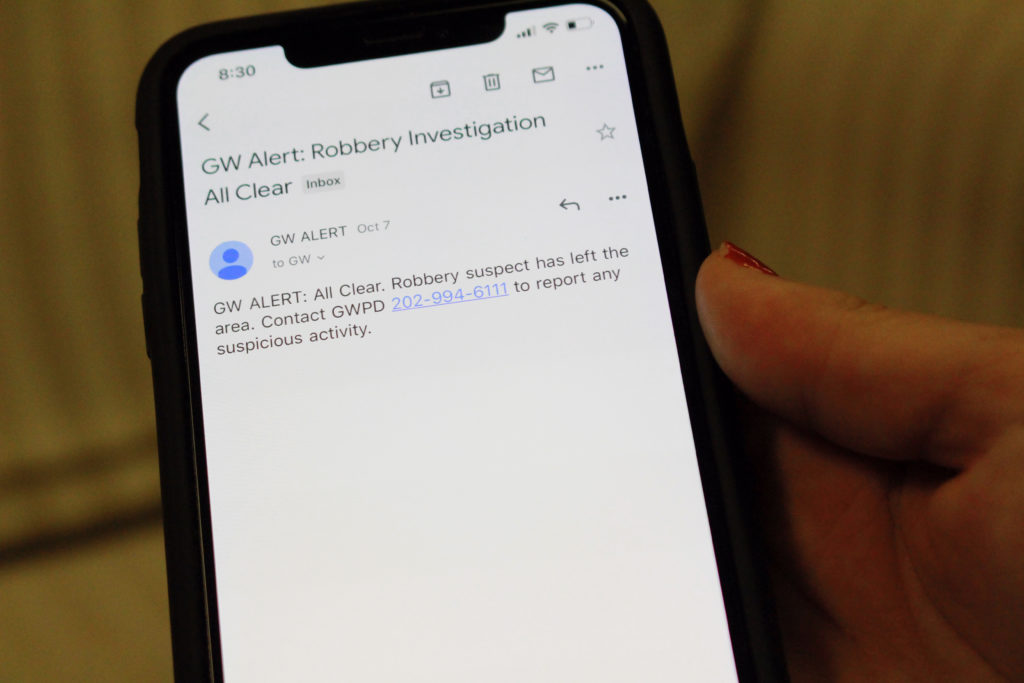Nearly half of students, faculty and staff do not receive emergency text alerts, officials said.
GW uses an opt-in policy for text alerts, requiring those who wish to receive alerts about crimes and emergencies on campus to manually register on their phone for the service, Scott Burnotes, the associate vice president of safety and security, said. Officials are working to switch to a model that allows students to opt out of the system to boost the number of people who receive emergency text alerts, he said.
“GW promotes the text alert system via new student, faculty and staff orientations and other promotional platforms like GW Today, safety fairs, emergency trainings and social media,” Burnotes said in an email. “Staff repeatedly recommend that all ‘opt in’ for text alerts.”
He said 49 percent of students, faculty and staff receive text alerts, and 100 percent of the population receives alerts through email notifications from the Division of Safety and Security. Burnotes said the department collects data on the volume of people who receive GW Alerts through the system’s reporting tool.
Students can register up to two email addresses and three phone numbers to receive notifications about crimes, weather and other emergencies through the Division of Safety and Security’s website using a NetID, according to the division’s website.
Students said emergency text alerts inform them of which areas of campus to steer clear of when crimes have occurred.
Sophomore Drew Spero said the University should advertise all of the options for receiving emergency alerts, like texts and emails, so students are alerted through the communication system they are most likely to check.
“There are more options than just email to get the notifications, because I think not everyone checks their emails that quickly,” he said.
Freshman Katherine Grubbs said the information included in the alert notifications is “limited” because the messages only provide a few sentences about the situation and a picture of the suspect in a crime. She said officials should add a sentence in the alerts that say which areas of campus to avoid after a crime and when they can return to the area.
“Give more information, like are we allowed to go in the area?” she said. “Is the area safe? Like OK, ‘He has left the area,’ but what area?’”
Freshman John Hicks said GWPD should send students pictures of the location of crimes so students know what to keep an eye out for. He said adding a map of campus to the alert that shows where crimes have occurred would more clearly direct students in the wake of a crime.
He added that the text alerts he receives only include the name of the crime that occurred, not the specifics of the situation.
“Having it on the map, ‘We have increased security presence because of X,Y,Z’ – I think things like that could be helpful, I guess just for students,” he said.
Freshman Amanda Levy said the emergency text alerts are efficient because students receive them at about the same time.
“I think it’s helpful in the sense that it is fast,” she said. “I don’t know how quickly we get those text messages, but everyone gets them at the same time.”





